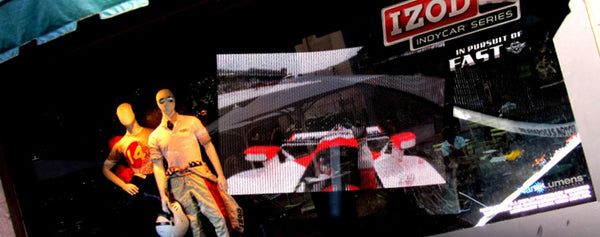Digital signage is changing the way businesses communicate ... but knowing where to start can be daunting!
So, what is digital signage?
There are many interpretations as to what digital signage is, but the more simplistic description is ‘a system that puts messaging on a screen. The form of the screen, message and system vary depending on the application.’
Digital signage applications can include:
Retail used to deliver advertising to consumers.
Business-to-business the target audience is the employees of the company, not the general public.
Room signage screens outside conference rooms displaying information about the next meeting, who has booked the room or the availability of the room.
Informational used to provide information to visitors about the facility, create branding for the location or to act as a direction finder, pointing a visitor to the correct location.
Large outdoor displays seen at major sporting events, relaying live action or replays of the event.
Transportation related screens appear in trains, aeroplanes, taxis, stations and airports. The prime functionality is to inform or entertain, and advertise frequently.

What does a digital signage system consist off?
The Display
All displays are flat panel screens are available in either, plasma, LCD, LED and/or 3D screens. Projectors also may be used in signage applications, with back projection particularly suitable for large-format indoor situations. Front projection is more suitable for dimly lit areas.
The Resolution
An important parameter associated with the screen display is the resolution. The higher the resolution, the greater the detail displayed on the screen. When choosing a display for a signage application, the size will be determined by the typical distance from the viewer, as well as the architectural surroundings.
The Media Player
The media player is usually connected to the screen and will play the message at the correct time and in the right format.
There are several methods when displaying information on one or more digital screens. Is the content identical or will it be different on each screen?
Identical content on each screen a device known as a splitter is used to separate the video signals to two or more screens.
Un-identical content on each screen there are 3 options how this can be executed:-
- A multi channel media player
- A media player per screen, or
- A PC with multi core graphics card to run different content on multiple screens. By adding additional graphic cards to the PC, this will allow further digital screens to be utilised.
The Scheduler
The media player has built-in software that allows playlists and scheduling to occur. The scheduler allows different content to be displayed at different times. For example, a single page of information may be displayed for the first 2 hours of the day, after which the screen is split into two zones - one with video from live TV feed, and the other with the original information page. Content can be programmed to repeat indefinitely, at specific times or arrange a playlist to loop for certain periods.
Media Distribution
The system distributes media to the required media players. Each player has a hard drive containing all media that should be displayed from that player. If media is constantly being updated and changed, media management is essential to ensure the hard drive doesn’t get ‘clogged up’.
The Network
A single media player with one or two screens does not have to be on a network. It can operate is isolation from any other system. However, the real benefit of digital signage is exploited when links with other systems and players are established in order to deliver a co-ordinated message.

What types of content are used in a digital signage system?
Careful consideration should be taken when deciding upon what type of content is to be used. Who is your intended audience?
Simple content may be able to be created in-house, whereas more complicated, complex material may have to be outsourced to a design house or another source.
Copyright laws must not be breached when designing your content material. Take into consideration any third party you may want to include. Ensure that the creator is aware and permission is granted for the use of their information and imagery in the proposed location of the digital sign.
There are many forms of content or media that can be utilised. These include:-
Video
Characteristics: moving images, excluding animation footage
Standards: MPEG-1, MPEG-2, MPEG-4, WMV, Quicktime, AVI, Real, DVB
Still Images
Characteristics: Pictures, photographs, diagrams, maps, plans
Standards: JPEG, TIFFF, BMP, PNG, GIF
Ticker
Characteristics: Smooth scrolling text usually associated with news feeds
Standards: RSS, XML
Audio
Characteristics: Mono or stereo audio
Standards: WMA, MPEG audio, MP3
HTML
Characteristics: Web pages
Standards: http, https, JavaScript
Animation
Characteristics: Cartoon-like appearance
Standards: Flash, SWF
How do you engage an audience?
There is a lot to consider when determining what type of digital signage is most appropriate for your audience. Here are just a few questions you have to ask yourself before deciding:-
- Are you selling a product/service?
- Who will be watching?
- Will the audience be static or moving?
- What is the message you’re trying to convey?
- Will the audience find the message interesting enough to stop and watch?
- How many times would an individual see your message in a day or per visit?
- Will pictures tell your story, or will you have to spell out the benefits?
